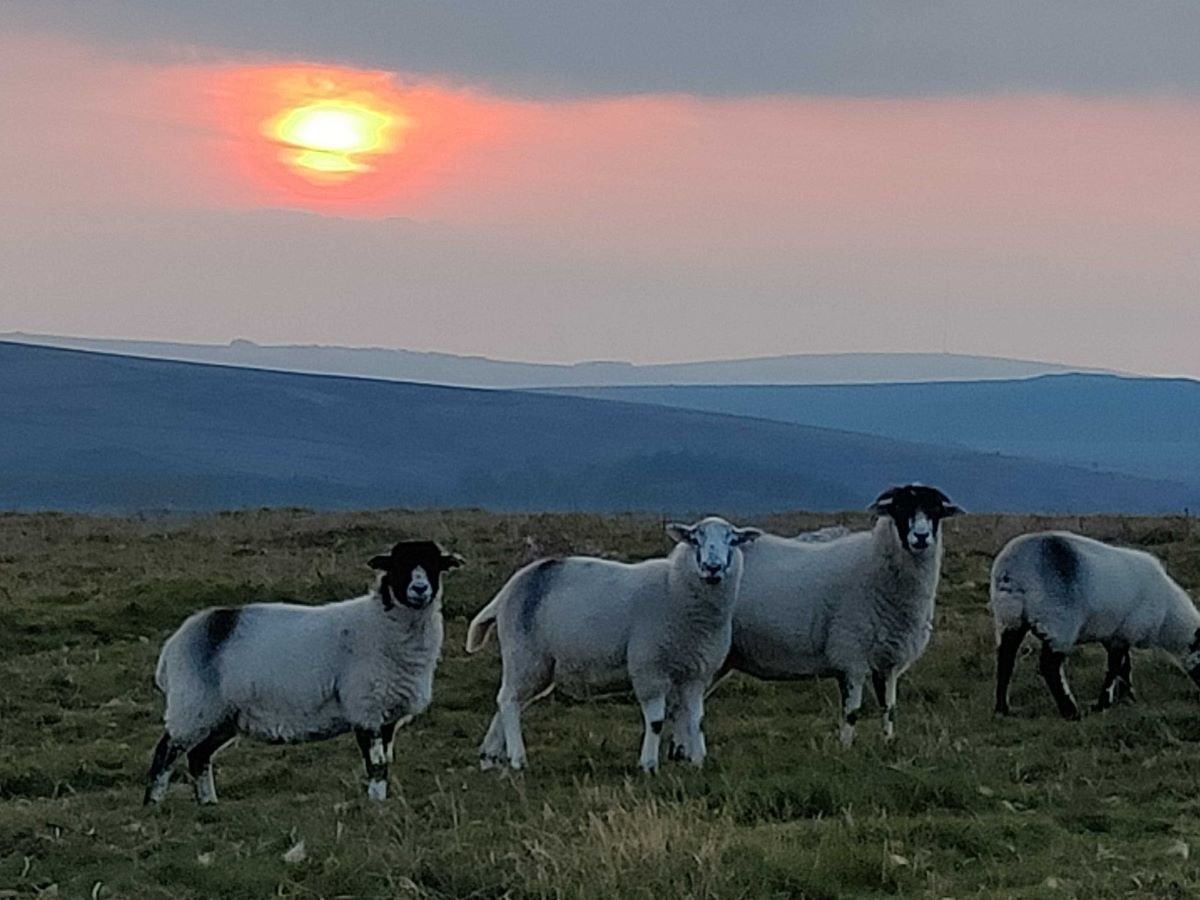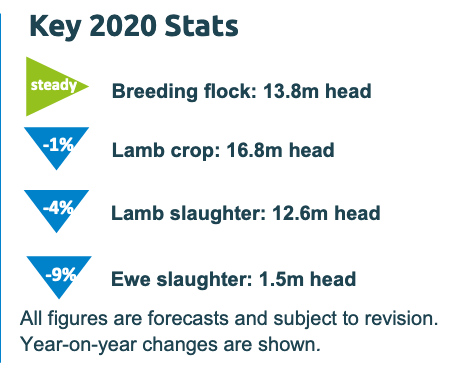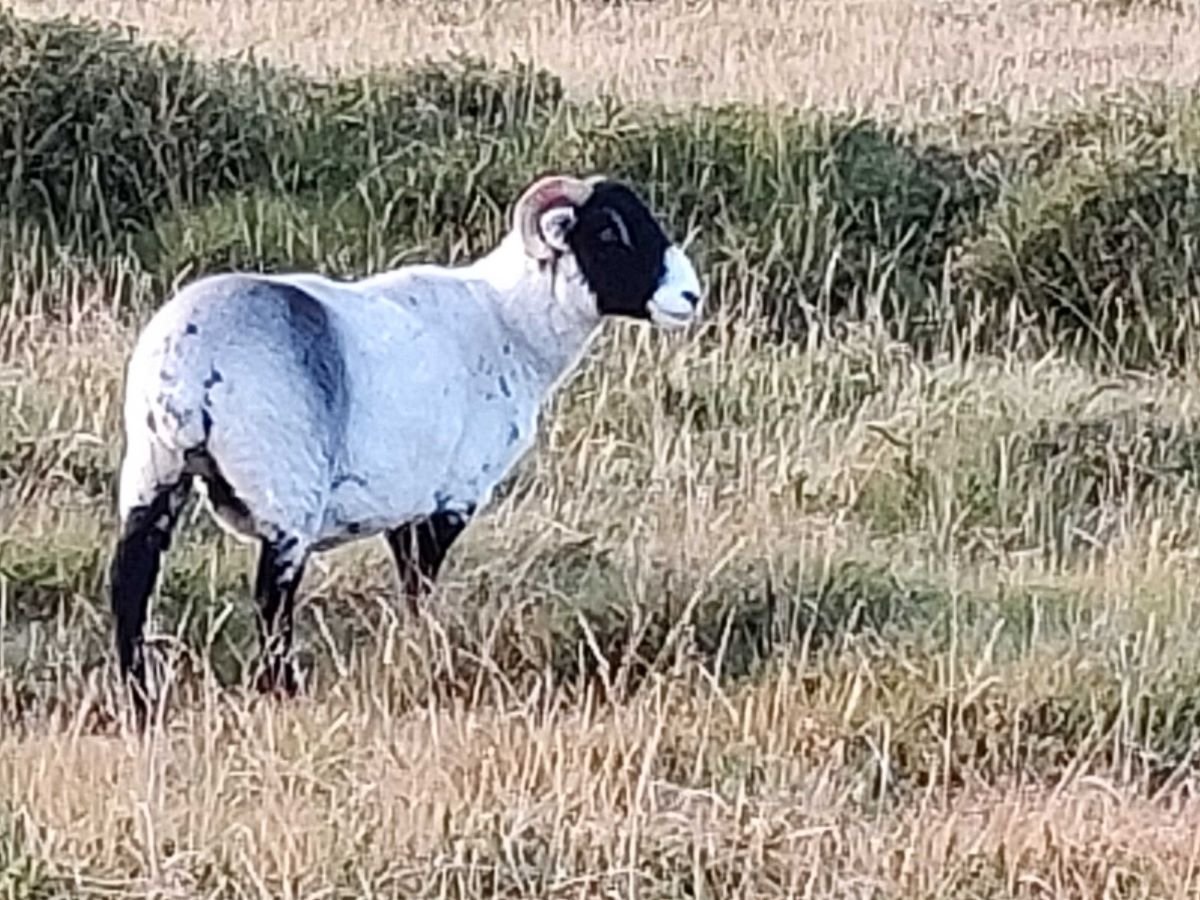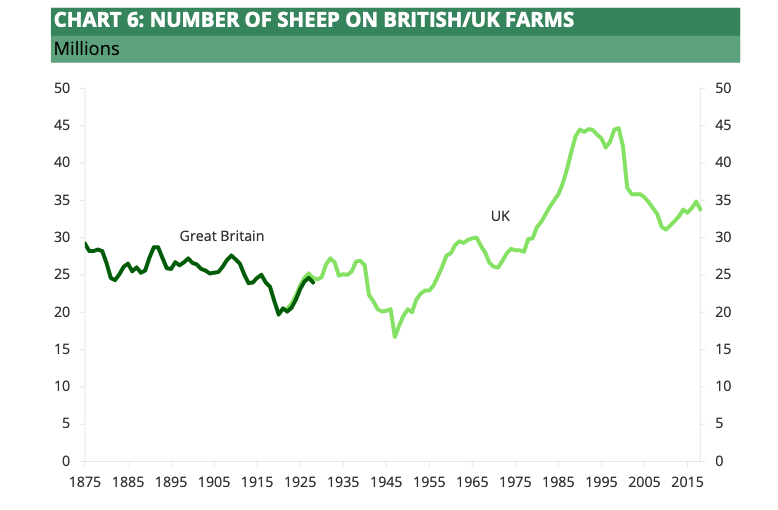
As we wait for what feels like the final slow-motion spin of the car as it hurtles inexorably towards the cliff edge, wondering if our heroes are going to escape from this seemingly impossible situation … again … no, stop there. Enough with the Hollywood imagery, the tired old metaphors. They just aren’t funny anymore. Or even appropriate.
Enough of clocks running down, of tunnels being entered, with or without light appearing at their ends.
We are indeed in the end game now, 72 days until the transition period – or stay of execution if you prefer. In reality there are just a couple of weeks left before any draft wording would need to start its journey around European capitals, for ratification. I won’t dwell on permits to enter Kent, or giant lorry parks that may or may not be forever more known as Farage’s Garages.
No, today I want to talk about sheep and lambs. For while Ukraine is the bread-basket of Europe, it’s equally true that, for the last 50 years at least, the UK has been the sheep flock of Europe.

With 14 million breeding ewes producing 17 million lambs last year, the UK was by far the largest sheep and lamb producer in the EU, with over a quarter of the total herd. Spain was second largest (17 per cent), followed by Romania and Greece. In terms of total sheep meat production, the UK produced 40 per cent of the total, followed by Spain with 16 per cent.
At the same time, the UK has been turning away from eating sheep meat for decades – mutton is now a rarity and lamb consumption is declining. Our lamb consumption is currently around 3.9kg per person per year, down from 6.3kg in 1990. Lockdown hasn’t helped, pushing lamb sales down a further 7.5 per cent, presumably because people like eating lamb when they go out for a meal, but not at home. Lamb is actually very easy to cook at home, but its decline illustrates our changing food culture. We have developed a vicarious and neglectful relationship with food – Bake Off is now a national institution, but Deliveroo and Uber Eats deliver food to eat while watching it.
With the prospect of the UK leaving the EU without a trade deal in place, or a very poor one, lamb exports are under direct and imminent threat: 2 million lambs born earlier this year may have nowhere to go. Ninety per cent of all lamb and mutton exports from the UK go to the EU, roughly a third of our total production. If tariffs, quotas and other restrictions (such as the arcane sanitary and phytosanitary rules) come into force, as looks increasingly likely, our lamb export markets will collapse. That ‘Oven Ready Deal’ is transformed into a pyre of unwanted animal carcasses and the collapse of a very old industry and, in some places, ancient farming cultures. The ramifications could be very significant, much greater than farms going bust and farmers bankrupt.
The National Sheep Association would have us believe that the sky will fall in if the number of sheep plummets, but this is not entirely true, or even remotely true. But it will change some important historic landscapes. It’s difficult to put an exact figure on how much land is used for sheep grazing, as some land grazed by sheep will also have cattle on it. Much less than in previous times though, as mixed farming has also been disappearing over the same timescale as the nation has fallen out of love with lamb. Nevertheless something like 47 per cent of the UK is used for sheep, beef and dairy production. It probably wouldn’t be an exaggeration to suggest one third of the UK is sheep-grazed.

One of those historic, sheep-grazed landscapes is Dartmoor – and there’s a bit of a sheep-related stink going on at the moment. Government wildlife agency Natural England (NE) has been in a long running tussle with the Dartmoor commoners over how many and what kind of animals should be on the unenclosed moor and when. An agreement was reached in 2012 after years of negotiation, but this agreement was based on an improvement in the condition of the wildlife, for which the moor is famous, in return for payments to the commoners. Fast forward to 2020 and NE has concluded that for one particular area of the Moor, Okehampton Common on its northern fringe, the presence of sheep over the winter is causing continuing damage to the wildlife habitats – upland heath and blanket bog. NE has told commoners they must remove their sheep during the winter time or lose their payments.
“Natural England threatens to sacrifice Dartmoor’s farmers” screamed the headline on a local Dartmoor news website, while Farmers Weekly adopted a more temperate tone, going with “Natural England wants sheep removed from Okehampton Common.” As local wildlife expert Tony Whitehead has pointed out, the Dartmoor Commoners are getting £1.43m over ten years, as part of their agreement with NE. NE has concluded that the arrangements that were made at the beginning of the agreement have not delivered the wildlife benefits that were agreed for the money, so they are now requiring the sheep grazing pressure to be reduced, especially in the winter months when sheep grazing can be particularly damaging to wildlife habitats like upland heathland and blanket bog. These habitats and other environmental aspects make Dartmoor an internationally important place for wildlife, recognised in protections derived from European law. Commoners will claim that sheep have always been part of the Dartmoor landscape and thousands of years of sheep grazing have shaped that landscape. This is true up to a point, but fails to recognise that the main sheep now on the moor, the Scottish blackface, was a late 19th century introduction and replaced the older Whiteface Dartmoor. The tougher Blackface could winter out on the moor. Before that, both cattle and sheep had been grazed on the moor during the summer, before being returned to nearby farms (or elsewhere) for the winter. As environmental historian Matthew Kelly wrote in his Dartmoor history ‘Quartz and Feldspar’:
“It is hard to exaggerate the significance this change in stocking brought to Dartmoor’s future as a Common”
and that change continues to play out in the decline in the wildlife value of Okehampton Common, as sheep left on all year round gradually nibble away at the heather, the bilberry and the bog plants. Dartmoor is in itself a microcosm for the changing fortunes of sheep across the UK and the ecological impact that such large numbers have had, and continue to have.

The total sheep population remained relatively stable from 1875 through to 1940 when it dropped as, during the Second World War, food production focussed on growing cereal crops and vegetables. The 1946 Hill Farming Act introduced payments which led to substantial increases in flock size; but the real boost came when the UK joined the Common Market and in particular its Common Agricultural Policy. Sheep farmers were paid per head of animal (headage), so the more sheep on the hills the bigger the payment. The sheep population shot up to 45m, but the consequences for the upland environment were severe causing the destruction and degradation of large areas of upland heathland, blanket bog and other habitats, to be replaced by upland sheep-grazed pasture with little wildlife value. Once it became apparent that so much damage was being done, the headage payment system was abandoned and numbers started to reduce but they are still at historically high levels as the above graph shows.
Naturally all manner of promises were made to the sheep farming industry before the referendum. At the launch of Farmers for Britain, the current Environment Secretary George Eustice promised farmers that they would have as much if not more of a subsidy than they had received from the EU.
“And let’s get one thing straight. ‘The UK government will continue to give farmers and the environment as much support – or perhaps even more – as they get now.”
Then again in the same sentence he uttered these words, which may come back to haunt him:
“We will also maintain a free trade agreement. Last year, we exported £7.5bn worth of food to the EU but we imported food worth £18bn. We have an annual trade deficit with the EU in food alone of £10bn so they need a free trade deal as much, or perhaps even more, than we do.”
It’s plausible, and has been rumoured, that the Government will step in with some compensation payments for exporters, who suddenly find their export markets have vanished in a puff of smoke on January 1st, including sheep farmers. It’s possible that after January 1st passes frantic negotiations will begin, to reach an agreement that will allow food to continue to pass freely between the UK and the EU once again. But given that the only way that can be guaranteed is for us to be part of the single market, it seems unlikely, to say the least. If, in a worst case scenario, all exports of lamb to the EU stopped, it seems inevitable that the UK sheep flock will dramatically reduce in size – perhaps by a third or more. But this would still only bring the herd back to the level it was at in the earlier decades of the 20th century. One could argue that the only reason the flock increased so dramatically was because we were producing lamb to sell to the EU.
Should we be so surprised that that opportunity would disappear once we left?




